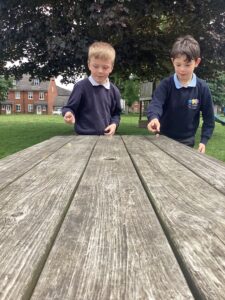Enquiry questions:
How do plants transport water?
Does the number of seeds within one plant pot affect the growth of the plants?
Working scientifically:
I can set up a simple practical enquiry.
Ask relevant questions and use different scientific enquiry types to answer them.
This afternoon, we carried out various science experiments that encourage us to observe over time whilst ensuring our tests are fair.
We placed a white flower into a pot of red water. We made predictions based on our prior knowledge and understanding. Tomorrow morning, we will be able to view the results and see if our predictions were correct.
The fun didn’t stop there. We then began an experiment to see what would happen if we planted one sunflower seed in a pot compared to two, four and eight. Again, we made predictions; we will take measurements over the coming weeks.
Finally, we planted our own sunflowers. We really enjoyed getting our hands dirty and it was so lovely to see the excitement in children.
Let’s hope for lots of sun and the children will be able to bring some tall sunflowers home.
Help at home – try planting some seeds of your own at home. Can you grow something you can eat? What does a plant need to grow? What is the function of the roots/stem/soil? What happens in the leaves?
Send pictures in and we can display in the classroom.





























































